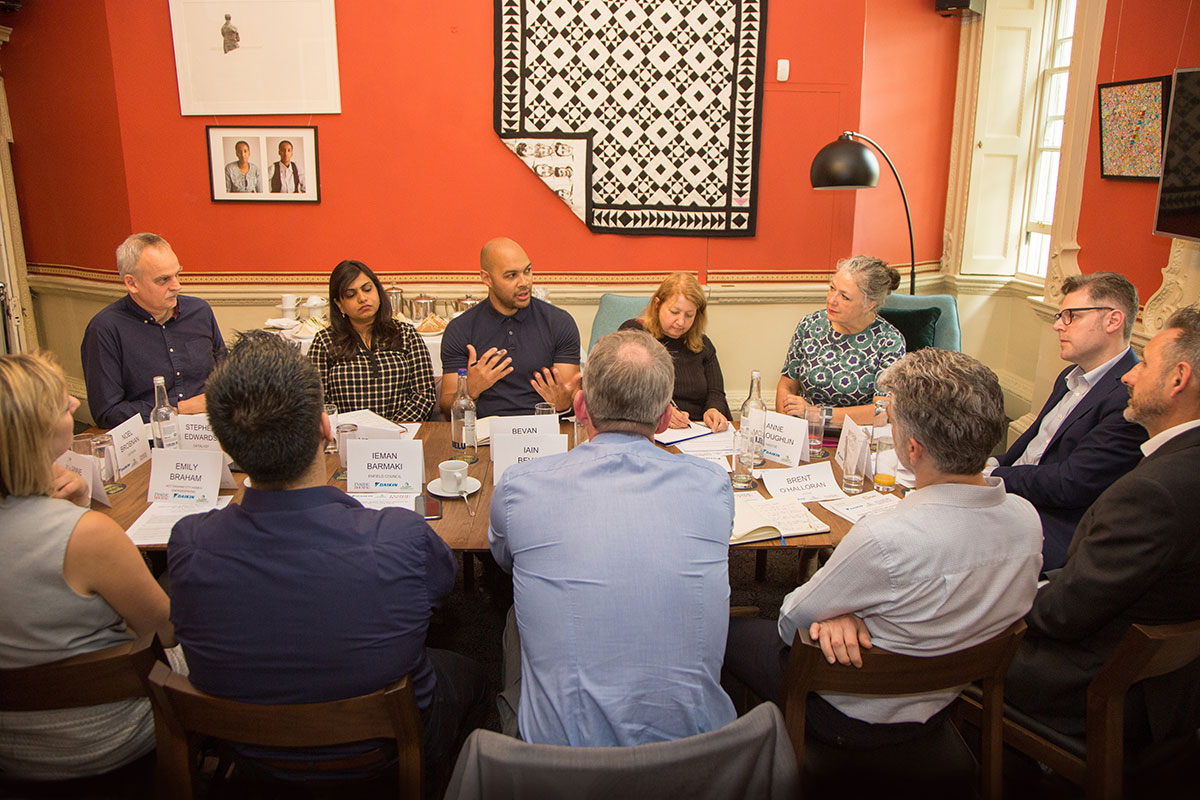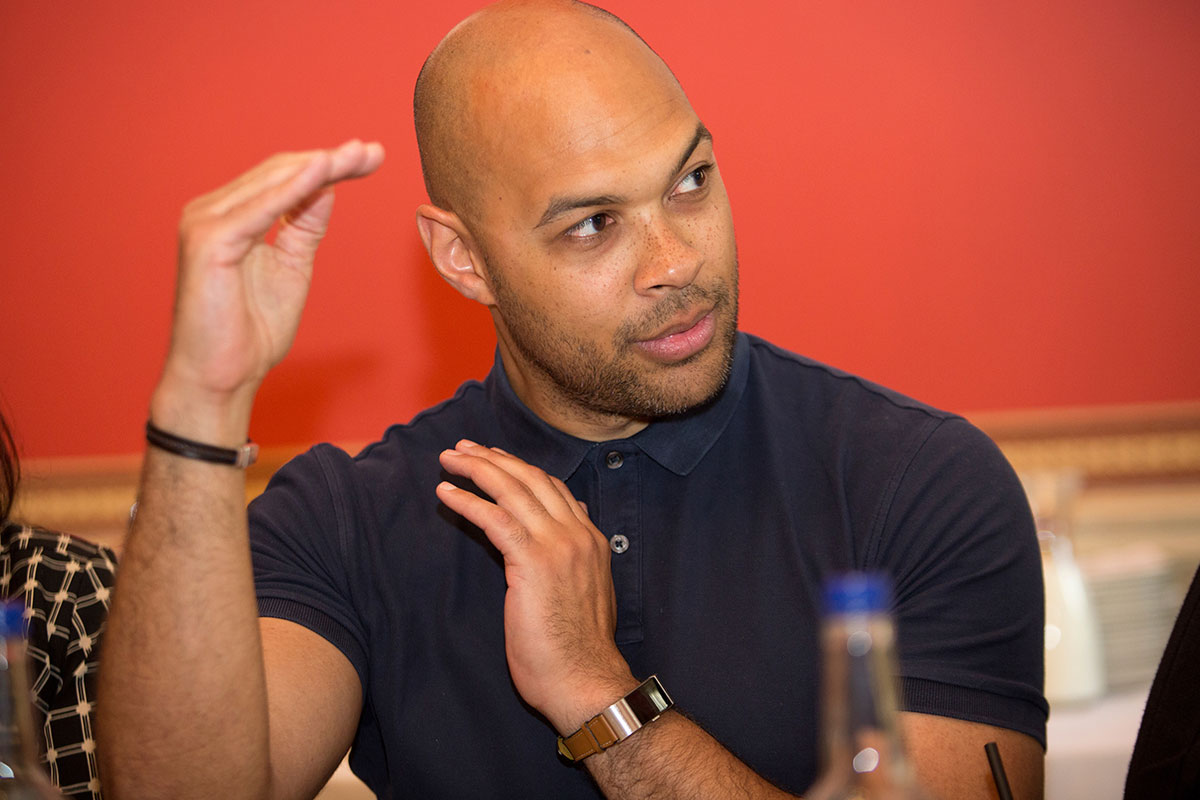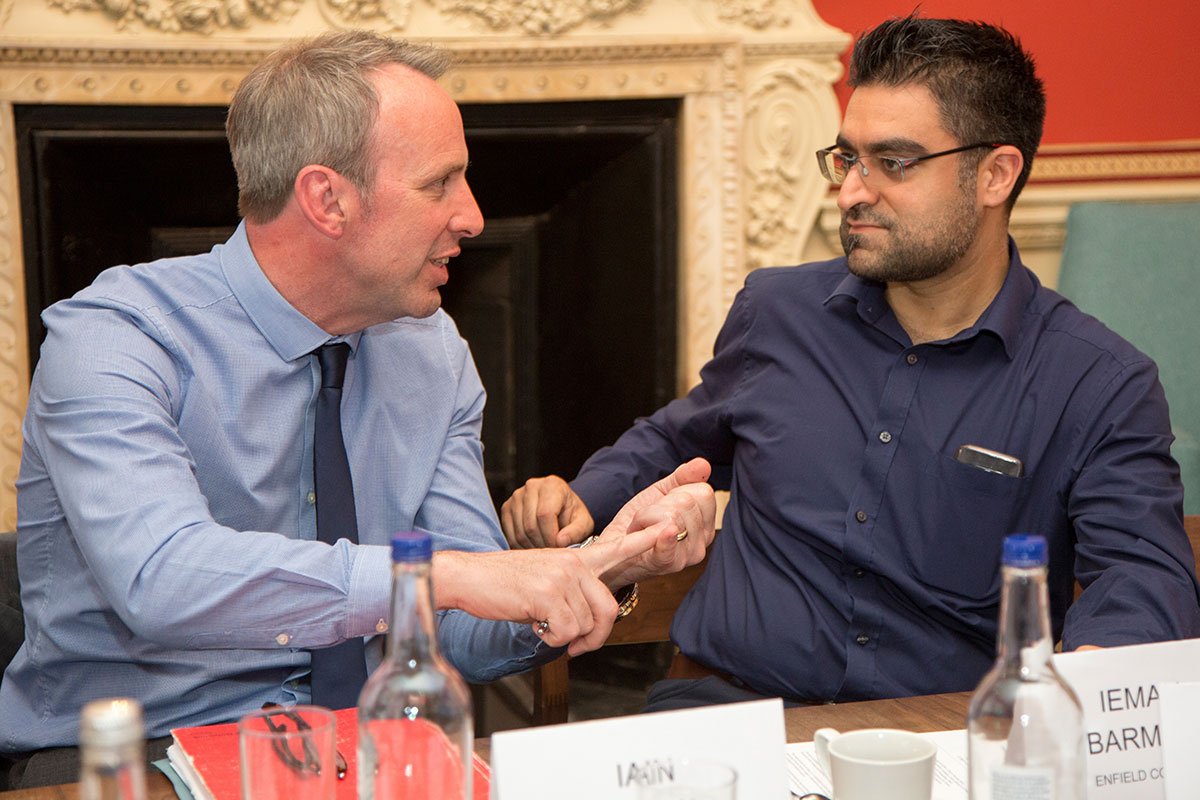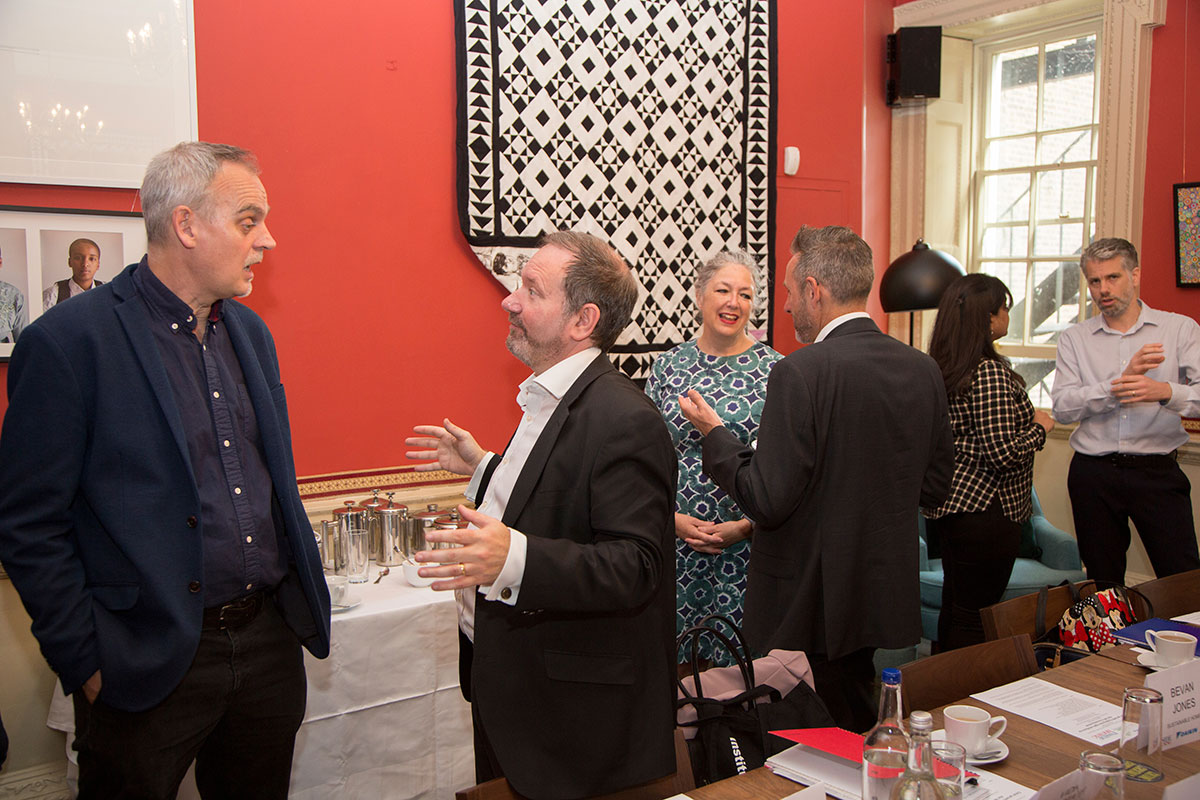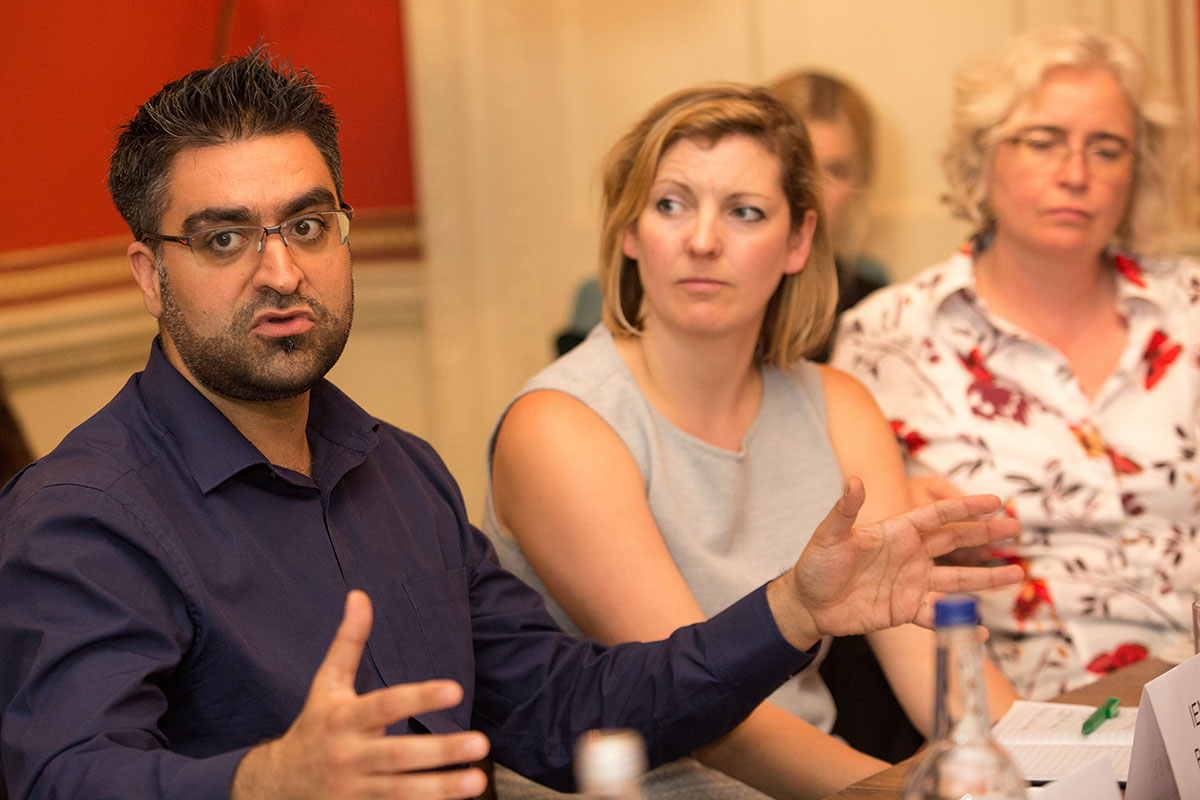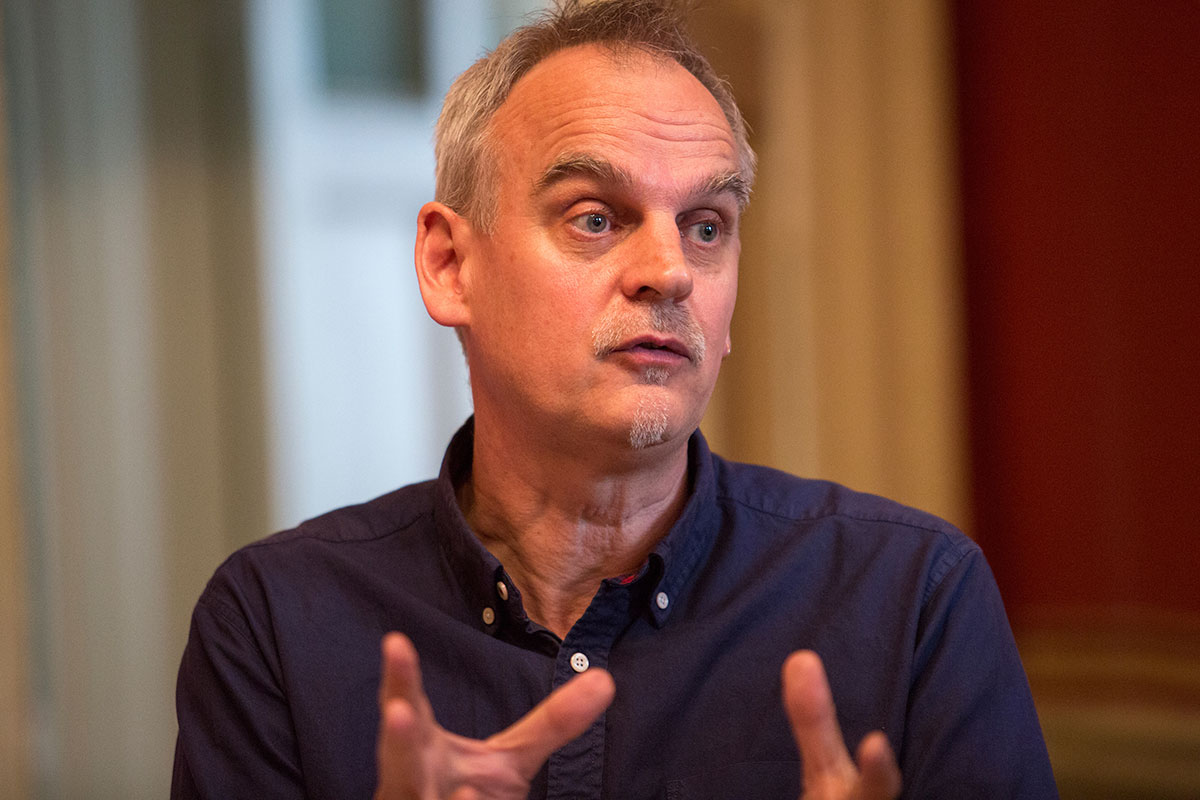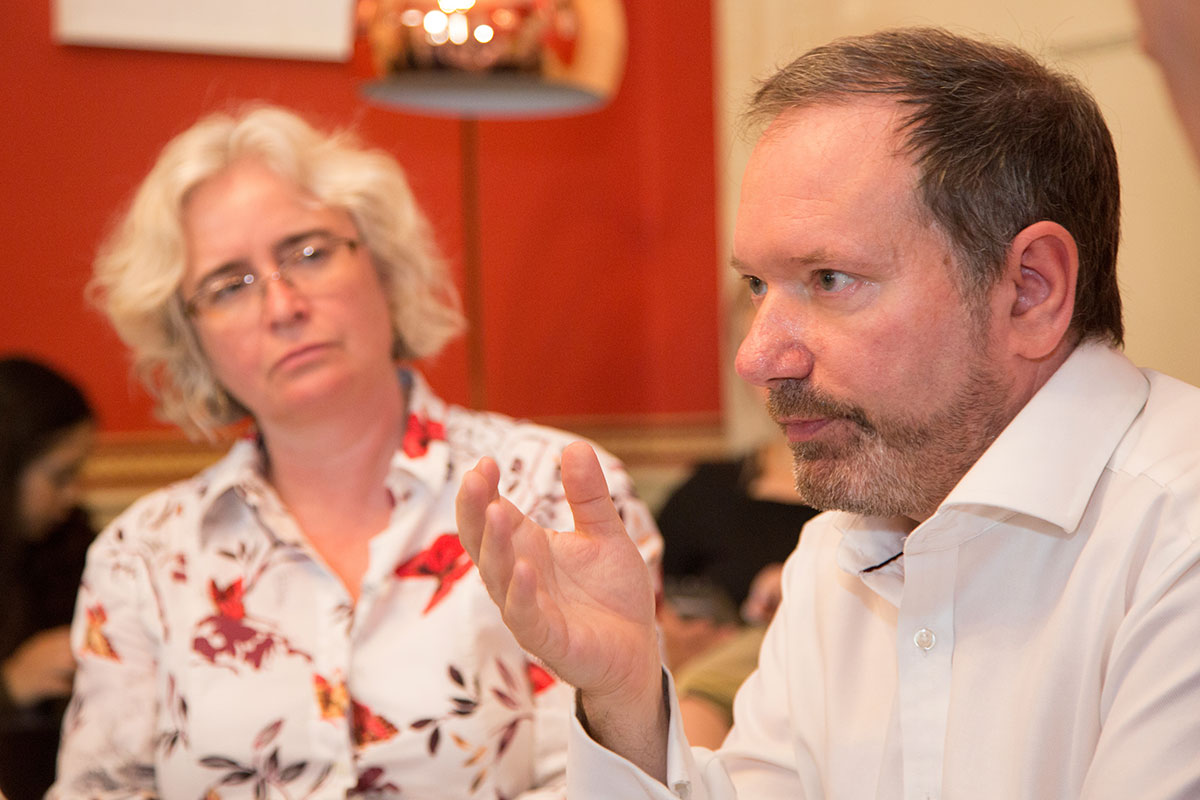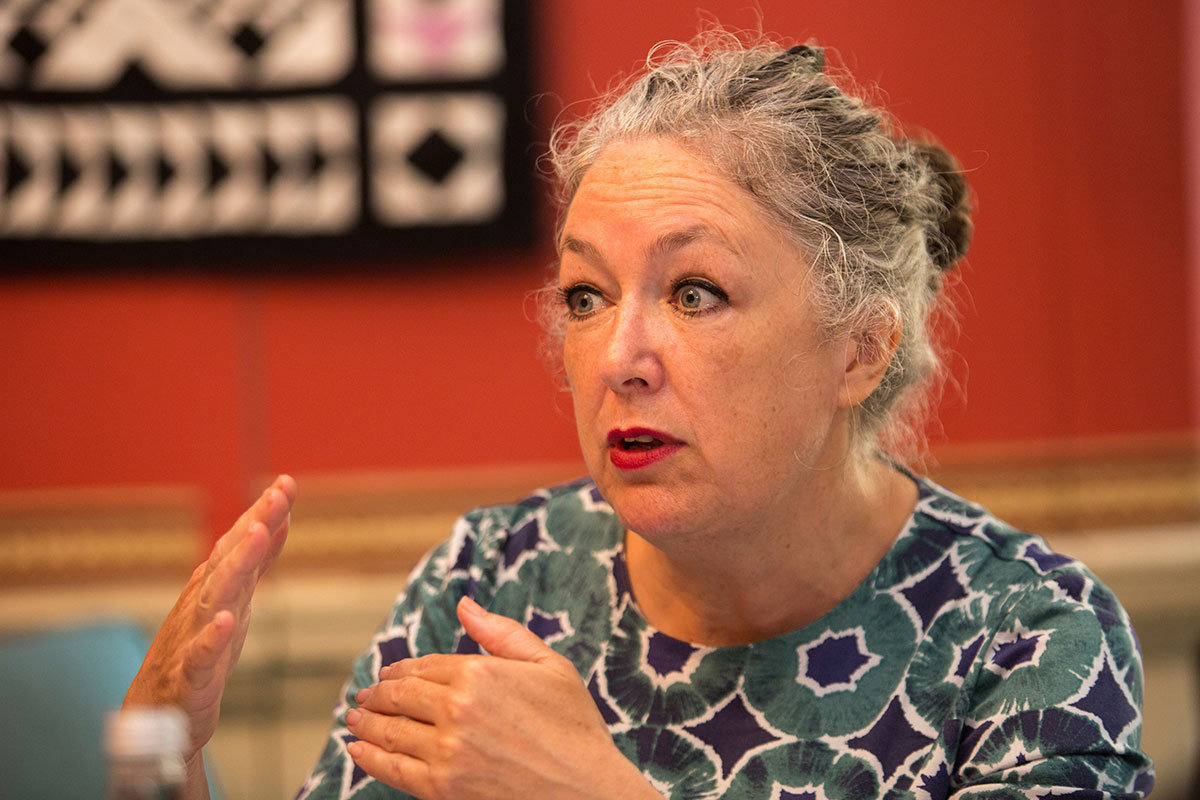Planning for the long term
Inside Housing and Daikin bring sector experts together to discuss funding for green projects, the role of government and regulation, and how individual players can take control. Photography by Jonathan Goldberg
In association with:

The housing sector is not short of passionate proponents of sustainable growth, but as ever there are many competing and conflicting factors influencing its efforts to do the right thing by the planet.
How can housing providers balance environmental aspirations with growth plans, within the constraints of ever-tightening budgets and changing regulations – and while keeping the interests of their tenants and treasury departments in play?
These are among the topics on the agenda at a packed round table discussion, sponsored by Daikin. Iain Bevan, commercial director for heating and renewables at Daikin UK , asks just how seriously the sector is taking sustainability – and who is taking the lead. “We feel it is a bit tick box-y; that there is lip service being paid [to sustainability],” he says. “It’s good to hear there is some aspiration, but sometimes it’s difficult to find the right people to talk to – especially in a large organisation. Where do we start? Who do we speak to? Who has that real passion?”
One of the first major talking points to emerge is about the role of government as a provider of both sticks and carrots. What role should it play in pushing the sustainability agenda, and how effective has it been to date?
It’s a mixed bag, panellists say. Accessing public funding earmarked for green projects hasn’t always been straightforward. “It has been chop and change in the past,” reports Brent O’Halloran, director of asset management at Hyde. “We have accessed funding only for it to be pulled at the last minute.” That uncertainty, he adds, has made this a precarious area for housing providers and has discouraged some from trying to access funding in the first place.
“Good targets are a driver.” - Noel Brosnan, director of asset management, Octavia Housing
“There are lots of figures around how much money is available, and it all sounds very positive,” agrees Ieman Barmaki, commercial sustainability manager at Enfield Council. “But in reality when you try to access those funds it’s very restrictive.”
Mr Barmaki adds his council has relied on the Renewable Heat Incentive scheme and the Energy Company Obligation (ECO) but, he says, the goalposts are changing – and that is hampering his ability to build those streams into future plans. “You can’t rely on the right blend [of funding] to be there at the right time when you want to plan your installation.”
Role of regulation
Funding might be too slippery to plan a long-term strategy around, but what about other levers available to policymakers? There are differing views around the table on the role regulation should play and its effectiveness. The government’s Clean Growth Strategy, published last year, does promise an extra £3.6bn for the ECO programme; it also states an aim to bring all fuel-poor homes up to at least Energy Performance Certificate (EPC) Band C by 2030, and to consult on how social housing can meet similar standards over the same period.
“I like EPC targets – good targets are a driver,” says Noel Brosnan, director of asset management at Octavia Housing. There’s a ‘but’, however. “In a lot of cases that means sticking in a gas boiler – when the more radical thing would be to accept gas boilers have a time limit and drive towards that limit,” he adds. “Carbon fuel is dying and we need to do more to accelerate its death.”
The strategy is a step in the right direction, says Joanne Wade, chief executive of the Association for the Conservation of Energy. “I like the fact it sets aspirations – the government has said: ‘We want buildings to look like this by this time’, and that gives us something to aim for.”
“The weakest part [of the Clean Growth Strategy] was the housing bit.” - Bevan Jones, managing director, Sustainable Homes
Bevan Jones, managing director of Sustainable Homes, believes the Clean Growth Strategy hasn’t gone far enough. “The irony was the weakest part [of the strategy] was the housing bit – there was nothing special about it,” he says. “[And] there is a lack of engagement with the strategy itself within the sector.”
The strategy needs a bit more welly if it is to make a real difference, agrees Daniel Archard, head of energy and green at Clarion Housing Group. “Energy performance needs to be a core legislative driver for social housing,” he says. The aim to meet EPC Band C “has only been thought about in a small way across the sector… It needs to have some real teeth behind it because then the sector can plan around it”.
That would mean the sector would have to attain a much better understanding of the energy performance of its stock, Mr Archard adds. “If there was a legislative driver we would have to understand what is going on. That’s a key area of work people need to think about.”
Better driver needed
There is also a question around the poor quality – and subsequent cost – of EPCs, says Diana Lock, sustainability manager at Optivo. “We encounter a problem, the EPC says this, the contractor says that,” she says. “The quality of some of the EPCs we are seeing is really poor, and we have to go through the process again… It’s an issue when dealing with retrofits.”
Emily Braham, head of sustainable energy at Nottingham City Homes, is also concerned the EPC targets could push the sector in the wrong direction. “To have carbon-efficient heating, we need to have electric heating or hope something happens with hydrogen,” she says. “We need to make our homes for low temperature heating, and the EPC is pushing us in the wrong direction. Its suggestion of minimum levels of insulation, then putting a gas boiler in, is not the most cost-effective [approach].”
The British preoccupation with gas is baffling to her European counterparts, says Ms Lock. “[They] cannot understand why we are still installing gas when they are taking all their gas out and installing electric. It’s easy to justify in terms of cost; less easy to do in terms of CO2 emissions.” Nevertheless, good regulation is a necessary driver, she adds. Ms Lock’s organisation manages large numbers of properties in London, where they fall under the London Plan. “Outside London, where there is effectively no code, it’s much harder to justify going down the route of a new standard,” she admits.
“Market forces will have an influence, but we do need regulation,” agrees Stephen Edwards, sustainability manager at Catalyst. “When it comes down to how we make a project work, it often comes down to: ‘Do we have to?’ And if not, we cut it out.”
Passionate leadership
But our panellists also agree the sector needs to lead on its own. Mr Edwards talks about a “huge culture change” necessary in the sector. “Sustainability has to be holistic,” he adds.
“It is good to hear there is aspiration.” - Iain Bevan, commercial director for heating and renewables, Daikin UK
Vidhi Gupta, associate – development consultancy at architects PRP, agrees. “At PRP, sustainability is involved right from the start of the design process. It has to be built in as part of the core of your design, not as an add-on.”
“Energy efficiency is the way we have to do business,” agrees Ms Wade. “So if the key leader who is committed to it leaves the organisation, it doesn’t die away. If the team is cut back, it doesn’t go away. That’s what we’ve got to get to.”
What about leadership from the top? Mr Jones believes there are far too few housing provider board members with skills in this area. “I suspect there is not one climate scientist on the board of [any] housing association,” he says. “There is a real lack of engagement and leadership within the sector.”
If good leadership is about making the case for sustainability, it is also about resources and priorities – and providers have to start talking the language of finance if they want to see results, argues Mr Barmaki.
“Most corporate organisations are about finances and figures,” he says. “The reality is that is the language we need to adopt to get our point across.”
“Let’s not be mesmerised by the metrics of being carbon neutral.” - Anne McLoughlin, operations director, Hastoe
He gives the example of using life cycle costing: low-energy components might cost more in the immediate term, but what about over 20 or 30 years?
The future is green
Selling a vision of the sustainable future we need is crucial, agrees Anne McLoughlin, operations director at Hastoe – but she says it doesn’t have to be complicated. “When we try and engage people we dive straight in with carbon or energy savings,” she says. “But… people want their homes to be warm, safe and dry. We have lost sight of what we are trying to achieve: a planet we can live on, and buildings we can live in.”
She continues: “Let’s not be mesmerised by the metrics of being carbon neutral… It can be off-putting. It’s about building really great homes that will encourage investment in the future.”
Institutional investors, she points out, are already divesting from fossil fuels. Going green makes long-term business sense.
There is a sense of tempered optimism around the table, perhaps best expressed by Mr Brosnan. He quotes: ‘‘The Stone Age didn’t end because they ran out of stones.” Then he adds: “There had to be a belief that there was something better out there. We know there is better out there... And we need to be the driver of it.”
Participants
Daniel Archard
Head of energy and green, Clarion Housing Group
Ieman Barmaki
Commercial sustainability manager, Enfield Council
Iain Bevan
Commercial director for heating and renewables, Daikin UK
Emily Braham
Head of sustainable energy, Nottingham City Homes
Noel Brosnan
Director of asset management, Octavia Housing
Stephen Edwards
Sustainability manager, Catalyst
Vidhi Gupta
Associate – development consultancy, PRP
Martin Hilditch
Managing editor, Inside Housing
Bevan Jones
Managing director, Sustainable Homes
Diana Lock
Sustainability manager, Optivo
Anne McLoughlin
Operations director, Hastoe
Brent O’Halloran
Director of asset management, Hyde
Joanne Wade
Chief executive, Association for the Conservation of Energy
